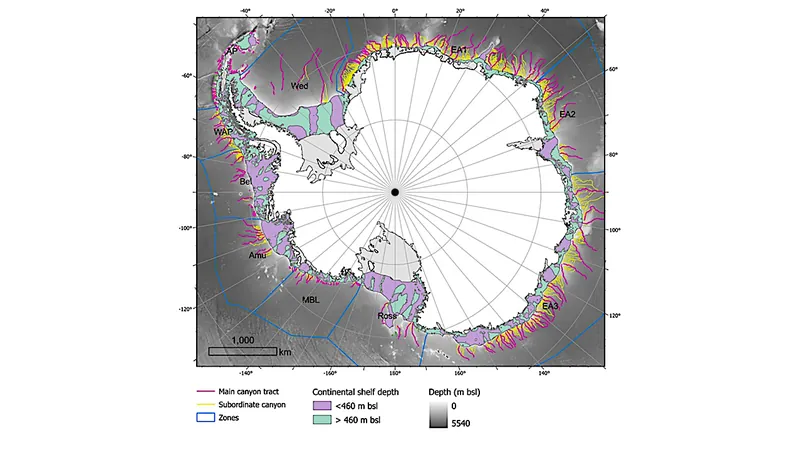
Revolutionary Microscope Unveils Secrets of Coral Health at Scripps Oceanography
2025-07-08
Author: Sarah
A Breakthrough in Coral Research
In a groundbreaking advancement at the Scripps Institution of Oceanography, a cutting-edge imaging platform is shedding light on the intricate world of coral microstructures and their health. Known as the Benthic Underwater Microscope imaging PAM (BUMP), this innovative tool is set to transform our understanding of coral ecosystems.
Uncovering Photosynthesis Underwater
Featured in the journal Methods in Ecology and Evolution, BUMP offers an extraordinary glimpse into coral photosynthesis on a micro-scale. This state-of-the-art microscope enhances previous methods involving pulse amplitude modulated (PAM) light measurements, allowing researchers to investigate the chlorophyll fluorescence that indicates how well corals are utilizing light for photosynthesis — a challenge in underwater settings.
A Game Changer for Coral Health Assessment
"This microscope marks a significant technological advance in assessing coral health," stated Or Ben-Zvi, a postdoctoral researcher at Scripps and lead author of the study. With coral reefs rapidly declining due to bleaching — the loss of their vital symbiotic algae — BUMP offers a non-invasive way to study these microalgae in their natural habitat.
How BUMP Works
Equipped with a sophisticated array of LEDs and Fresnel lenses, the BUMP microscope condenses illumination onto specific coral areas, allowing for incredibly brief exposure times that mitigate motion blur. It captures both red fluorescence, indicative of microalgae efficiency, and cyan/green fluorescence, which reveals the coral's own fluorescent proteins crucial for its life processes.
Real-Time Insights from the Deep
Recent trials at 12 meters depth in Maui, Hawaii, have showcased BUMP's capabilities, revealing that corals constantly adjust their volume and shape. Researchers observed how a coral polyp actively contracted its tentacles to capture or eliminate passing particles, adding new dimensions to our understanding of coral behavior.
A Tool for Climate Change Mitigation
The data collected by BUMP could serve as an early warning system for corals facing irreversible damage from global climate change, including marine heat waves. Such insights are essential for developing effective strategies to safeguard these vital ecosystems.
More than Just Corals
BUMP is not limited to coral research; it holds tremendous potential for studying other photosynthetic marine organisms, such as young kelp. Current research efforts at Scripps are utilizing this innovative imaging system to explore the early life stages of the elusive giant kelp off California’s coast.
A Bright Future for Ocean Research
As photosynthesis plays a crucial role in sustaining life on Earth, the possibilities for BUMP are vast. Researchers anticipate exploring numerous applications that could enhance our understanding of ocean ecosystems and their interconnectedness, especially off the coast of San Diego.





 Brasil (PT)
Brasil (PT)
 Canada (EN)
Canada (EN)
 Chile (ES)
Chile (ES)
 Česko (CS)
Česko (CS)
 대한민국 (KO)
대한민국 (KO)
 España (ES)
España (ES)
 France (FR)
France (FR)
 Hong Kong (EN)
Hong Kong (EN)
 Italia (IT)
Italia (IT)
 日本 (JA)
日本 (JA)
 Magyarország (HU)
Magyarország (HU)
 Norge (NO)
Norge (NO)
 Polska (PL)
Polska (PL)
 Schweiz (DE)
Schweiz (DE)
 Singapore (EN)
Singapore (EN)
 Sverige (SV)
Sverige (SV)
 Suomi (FI)
Suomi (FI)
 Türkiye (TR)
Türkiye (TR)
 الإمارات العربية المتحدة (AR)
الإمارات العربية المتحدة (AR)